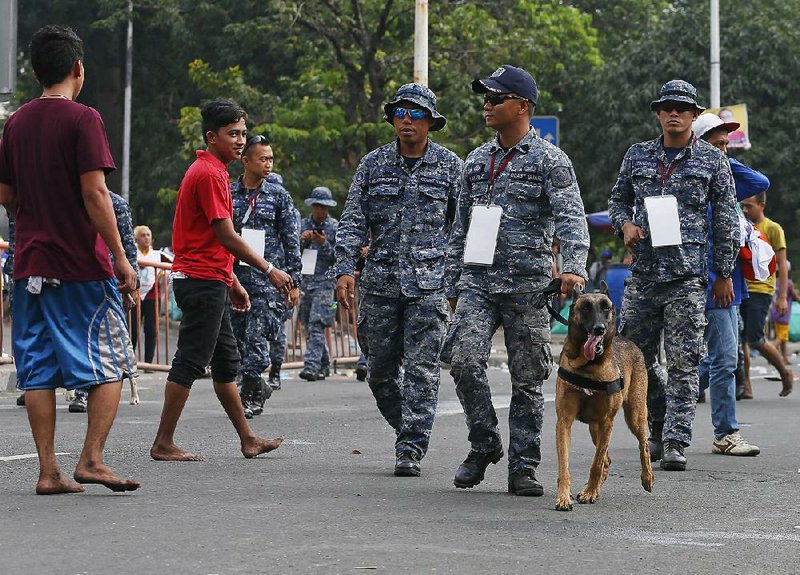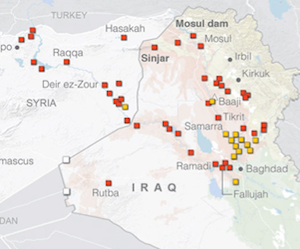MANILA, Philippines -- More than a million Filipino Roman Catholics jammed Manila's streets Saturday for an annual procession of a centuries-old statue of Christ under extra heavy security after the Paris attacks.
About 5,000 police and soldiers were deployed to secure the daylong procession of the Black Nazarene in one of Asia's largest religious festivals, although no specific threat was being monitored.
The crowd reached more than a million by noon, Manila police Chief Superintendent Rolando Nana said.
The gathering is a security nightmare for the Philippines, a poor Southeast Asian country battling widespread crime nationwide and Muslim extremists in the south. Police sharpshooters, bomb-sniffing dogs and SWAT teams stood by and surveillance drones were flown over the slow-moving procession.
Security forces randomly checked bags for weapons, firecrackers and pointed objects, including umbrellas, which were banned. Coast guard and navy personnel patrolled a major river where the procession crossed over.
Although there was no specific terrorist threat, security concerns were sparked by recent attacks by Islamic State group extremists in countries such as France, police said.
One person fainted during the procession and died from an unspecified ailment. Nearly 1,000 other people received treatment for illnesses and injuries, including many who got bruised or suffered fractures while jostling through the thick crowds to get close to or have their white towels wiped on the wooden statue of Christ, which was on a carriage pulled by a rope by men in maroon shirts, according to Gwendolyn Pang of the Philippine Red Cross.
The wooden statue of Christ, crowned with thorns and bearing a cross, is believed to have been brought from Mexico to Manila on a galleon in 1606 by Spanish missionaries. The ship that carried it caught fire, but the charred statue survived. Some believe the statue's survival from fires and earthquakes through the centuries and intense bombings during World War II is a testament to its mystical powers.
The spectacle reflects the Philippines' unique brand of Catholicism, which includes folk superstitions, in Asia's largest Catholic nation. Dozens of Filipinos have themselves nailed to crosses on Good Friday to emulate Christ's suffering in another tradition that draws huge crowds each year.
People brave the crowds and heat to pray for good health, jobs, fortune and solutions to all sorts of predicaments.
Dante Avila, a 22-year-old factory worker, said he was wrongly implicated in the shooting death of a child in a gang brawl in November in his neighborhood in suburban Caloocan city. Fearing for his life, he said he fled from home and hid and had showed up at the procession to pray to the Nazarene to help him prove his innocence.
"I swear to God I'm innocent," Avila said from a stretcher in a first-aid station, where medics treated the injured.
After struggling to touch Christ's statue, he got tightly pressed in the crowd and fainted.
Arvin Tamayo and his family rented a truck to parade life-size statues of Christ and the Virgin Mary, a ritual they have been doing every year since his father died of cancer in 2009.
"We're praying for good health," he said. "It's so financially and emotionally draining to see somebody in the family die slowly in pain."
A Section on 01/10/2016

